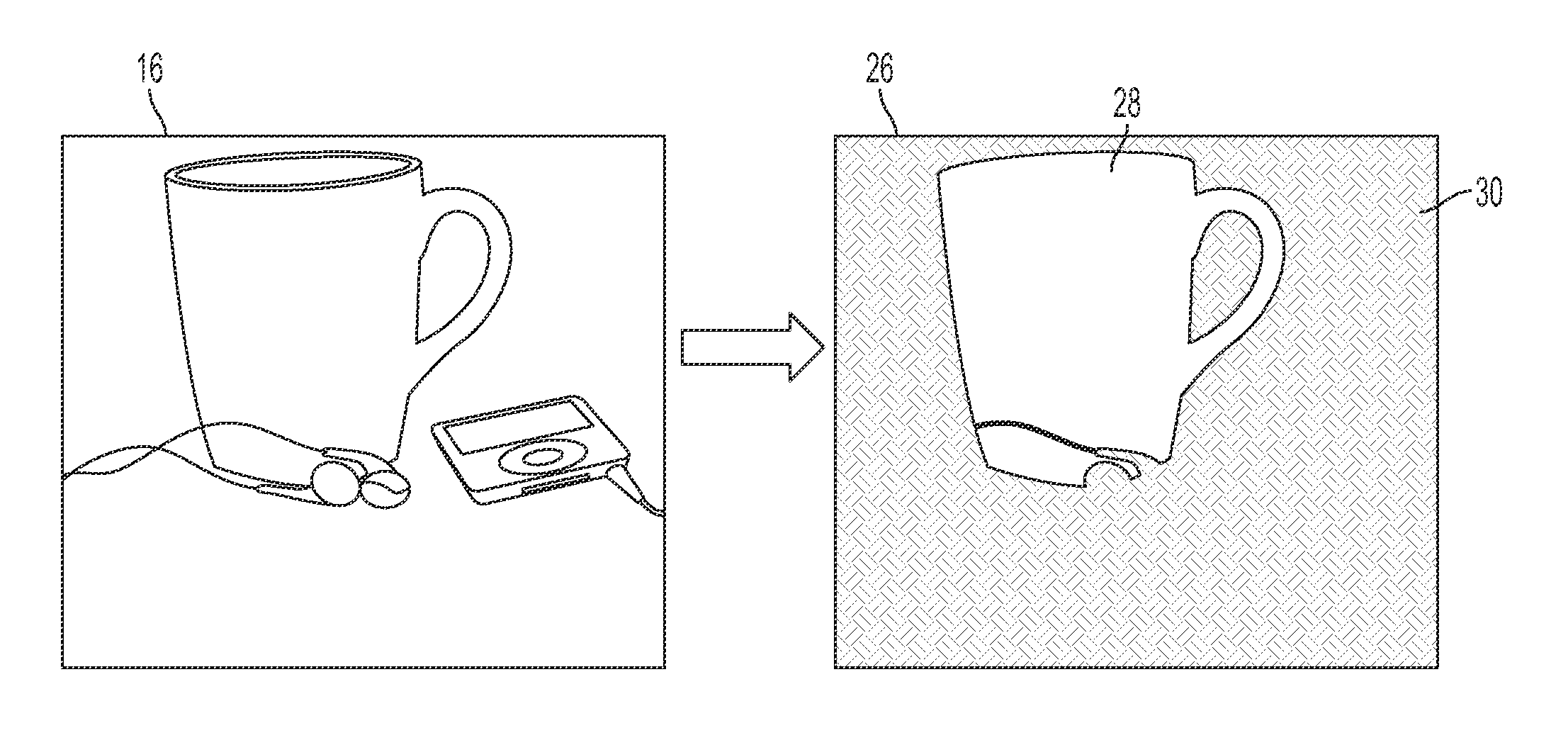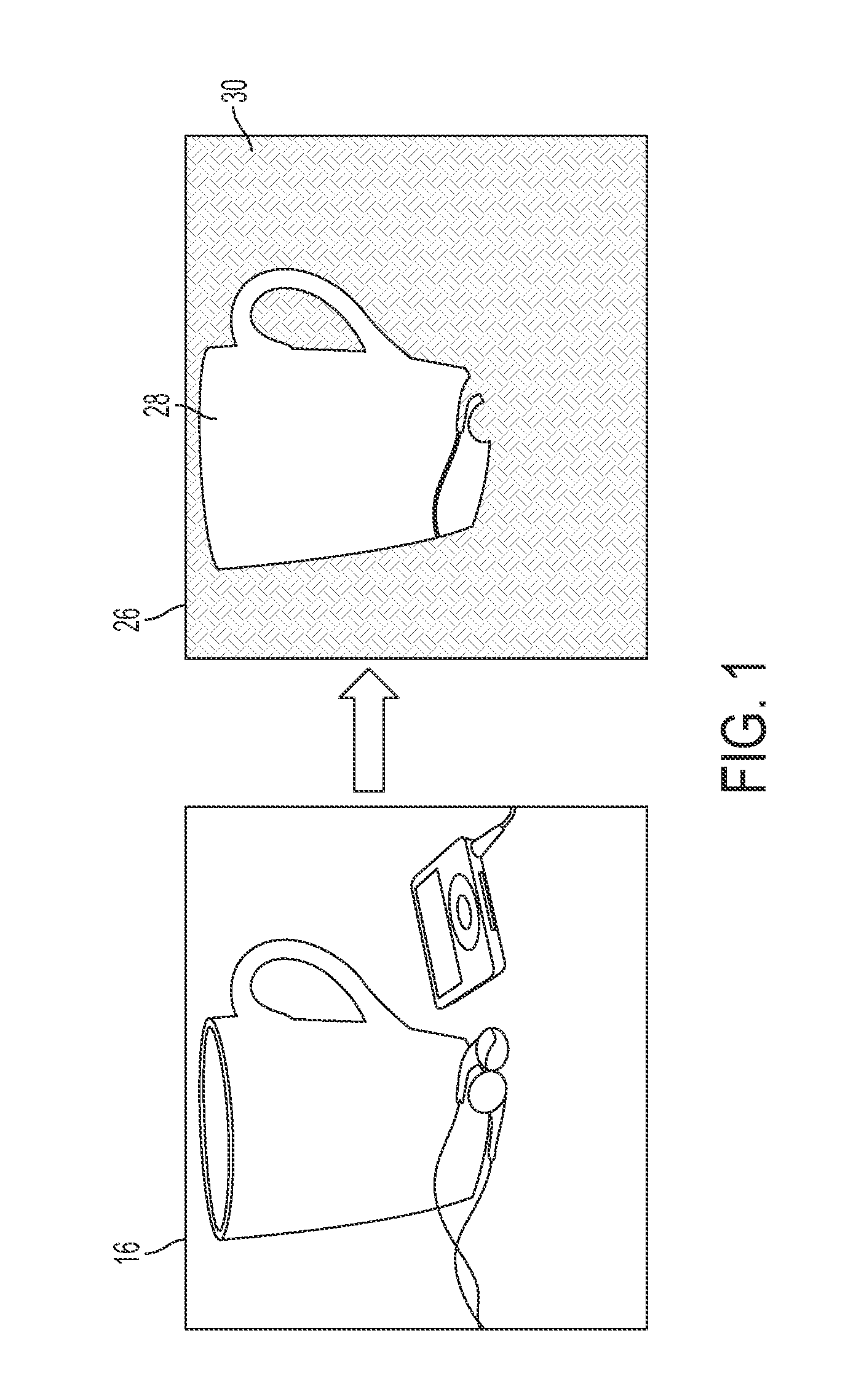Graph-based segmentation integrating visible and NIR information
a segmentation algorithm and information technology, applied in the field of image processing, image retrieval, image archiving, can solve the problems of difficult object segmentation and prone to errors in segmentation algorithms
- Summary
- Abstract
- Description
- Claims
- Application Information
AI Technical Summary
Benefits of technology
Problems solved by technology
Method used
Image
Examples
example 1
[0138]Experiments were performed using Method 1 above on three example images, with the unary potentials computed on the output of a set of classifiers, including classifiers for building, tree, sky, road, and grass. The pairwise potentials were computed based on the NIR information, as discussed above. FIG. 8 shows the original visible image (the original was in color). FIG. 9 shows the corresponding NIR image, using grayscale to represent NIR intensity. FIG. 10 shows the segmentation of the image using visible information only. FIG. 11 shows the segmentation of the image when the exemplary method is used, i.e., using visible for the unary term and NIR in the pairwise term. It can be observed that the NIR information, used only in the pairwise term, enhanced the segmentation results and in particular, the borders of the segments. This is likely due to the material dependency of the different categories which is better captured by the NIR channel.
example 2
[0139]Experiments were performed using Method 2 above. Results for the application of Method 2 to the image 16 shown in FIG. 7 (which was in color), with the illustrated template 38 (which was in color) are shown in FIGS. 12 and 13. In the illustrated example, the image 38 of the hat used as a template has regions of different colors with triangular spikes of different colors extending from them. In the image 16, the colors of the hat are not identical to those visible in the template and the hat is partly occluded. Even in difficult conditions such as these, with a template object appearance that is different from the appearance of the object in the image, the produced segmentations using the exemplary model (with NIR information) (FIG. 12) are significantly better than the visible-only model's segmentations (FIG. 13). The exemplary method is thus able to combine the visible and NIR information to deal with background clutter from colors or patterns.
[0140]It is to be expected that ...
example 3
[0141]Method 3 was used on an image of a patterned cup and a plain one against a white background (FIG. 14). The visible part of the model (saliency detection) was able to extract colorful patterns on the most salient cup in the image (FIG. 15), but as the cup was primarily white on a white background, the saliency algorithm used alone fails to extract the entire cup, and segments only the colorful pattern on the cup. Using the material specific appearance of the cup in NIR, the segmentation was more accurate with the exemplary full model, segmenting the shape of the cup fairly well (FIG. 16). The exemplary joint model once again is able to achieve much better segmentation, even on a difficult task such as this.
PUM
 Login to View More
Login to View More Abstract
Description
Claims
Application Information
 Login to View More
Login to View More - R&D
- Intellectual Property
- Life Sciences
- Materials
- Tech Scout
- Unparalleled Data Quality
- Higher Quality Content
- 60% Fewer Hallucinations
Browse by: Latest US Patents, China's latest patents, Technical Efficacy Thesaurus, Application Domain, Technology Topic, Popular Technical Reports.
© 2025 PatSnap. All rights reserved.Legal|Privacy policy|Modern Slavery Act Transparency Statement|Sitemap|About US| Contact US: help@patsnap.com



